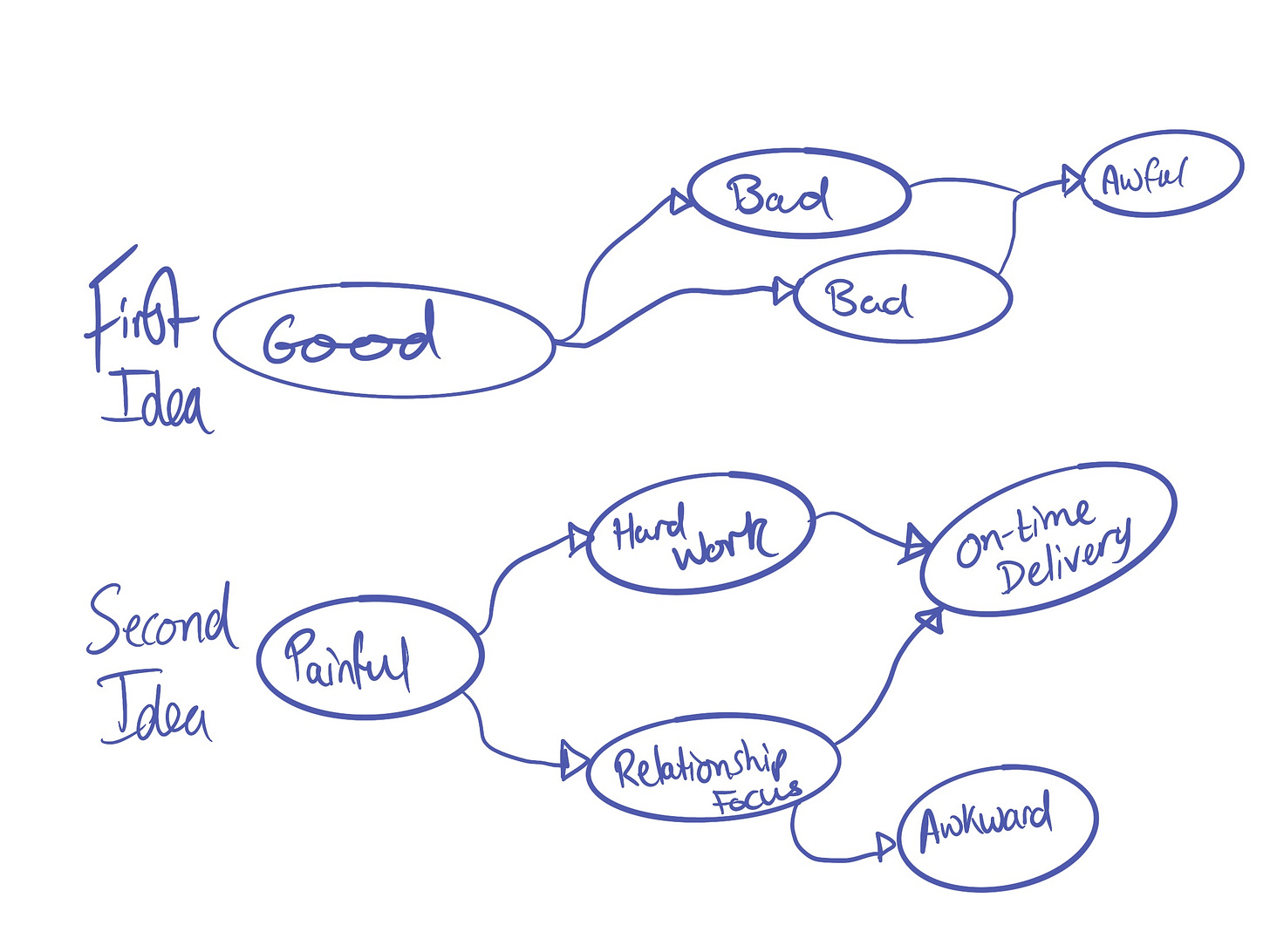How To Stop Making Horrendous Decisions In Your Procurement Career
Free Download to help you make better decisions
Hey Procurement Legend, here’s our Tuesday Mental Model post all about making better decisions.
If you can make better decisions, you will progress further and faster in your career. Use this mental model to help you and grab the free download at the end of the article.
PS. Thank you to all of our new paid community members. We doubled our numbers last month. As a reminder, our paid community get access to more content to help them with their procurement careers…and make more money. You’ll likely be able to expense this through your L&D budget, too.
Have you ever wondered why people around you made a specific call?
I have. Sometimes positive…and at times, I wondered why on Earth they decided to make such a horrendous call and why so many people seemed to think it was a good call. I was bamboozled.
So, like the Procurement Nerd I am, I started to investigate what was happening.
I realised that they were making level 1 decisions. Decisions that might have a short-term advantage but would sting them later on. I realised that these people couldn’t think beyond the first idea.
I saw people build this into RFP questionnaires, which meant all the questions were gearing up for that short-term success metric, but there would be gaps later on, no doubt.
What I’m talking about here is a mental model called “Second-Level Thinking”.
What is Second-Level Thinking
Level 1 Thinking is about your first idea and whether the idea merits a good or bad idea.
For example, you have an underperforming supplier who has failed to meet the contract deliverables three times in a row.
Your Level 1 Thinking could be anything, but let’s go with the idea that you will terminate the agreement for material breach.
Most people would likely agree that this is a good option (and I appreciate we’re oversimplifying this).
But what happens if this is not the best decision?
“Failing to consider second- and third-order consequences is the cause of a lot of painfully bad decisions, and it is especially deadly when the first inferior option confirms your own biases. Never seize on the first available option, no matter how good it seems, before you’ve asked questions and explored.”
—Ray Dalio (from FS Blog)
But what if that initial idea led to many disastrous outcomes, such as:
Litigation because you hadn’t provided key materials in time.
an ambiguous delivery date.
A few potential suppliers were available to meet the requirements, but none had the capacity for your order, which was smaller than their long-established clients.
“First-level thinking is simplistic and superficial, and just about everyone can do it (a bad sign for anything involving an attempt at superiority). All the first-level thinker needs is an opinion about the future (…) Second-level thinking is deep, complex and convoluted.” - Ness Labs
Howard Marks, Investor & Writer.
When you think further along the decision-making tree, both through the lens of more decisions and time, your first idea will most likely always be the worst.
How to Put Second-Level Thinking into Practice
I like what Farnham Street says: Always ask yourself, “And then what?”
It’s so simple, much like the 5 Whys, which is quite possibly my favourite mental model to deploy. If, with every idea we have, we consider what might come next, we will instantly be making better decisions than most people.
Naval Ravikant says that those who make better decisions are better compensated. I believe this. Whether you are new in your career or a seasoned CPO, if you can make your decision-making 10% better or take the number of good decisions you make up to 70% from 60%, you’re winning.
It’s estimated that we adults make 35,000 decisions a day.
There’s a lot of room for improvement outside of lessening the amount of decisions you make.
So remember to ask yourself what comes next.
And I’ve touched on it already, but time can prove to be a great way of applying Second-Level Thinking into Procurement.
Imagine if we follow the trail of the first thought of removing that supplier by terminating the agreement.
We soon realised the first decision, which looked to be a good one to remove a poor-performing supplier, was bad when we received notice of litigation for breach of contract via email the following week.
We then incur legal costs in the initial defence over the next 1-3 months, which is a significant monetary value.
We then lost the case, which was awful for our reputation, and several of our suppliers informed us that at the end of the contract term, they no longer wished to work with us as we’re hard to work with.
By taking time to figure this out in advance and create more ideas, perhaps leaning on the Thought Experiment mental model, we could have uncovered these issues and then focused on rebuilding the relationship, sorting our side out, getting the materials to them, and protecting what should be an incredible relationship.
Closing Thoughts
We need to make better decisions when working across complex ecosystems such as our supply chains. Within Procurement, one bad decision could impact:
The supplier
Your CFO
The CEO
Your colleague who needs this supplier to deliver on time to meet their project
Pay of your Supplier’s staff
A community project that isn’t delivered on time
An over-budgeted railway system to connect the north to the south of an unnamed country
You get it.
The reach of a decision can be far and wide, whether good or bad or somewhere in between.
Get a copy of your own Second-Level Thinking Mental Model Sheet here to document your thoughts.





